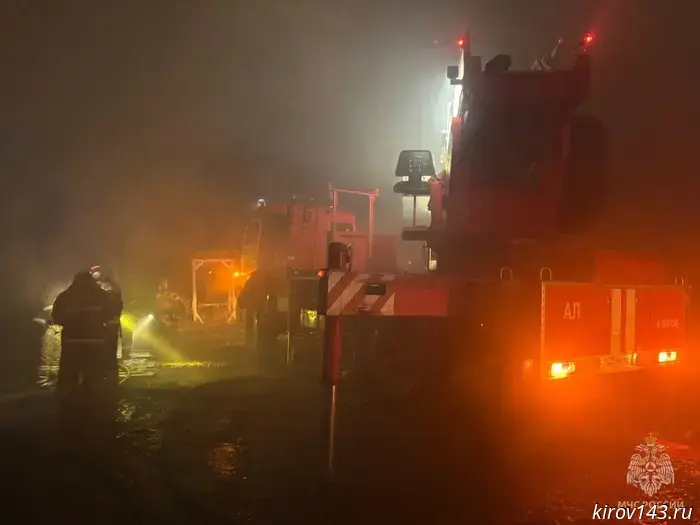-at-level-M865-directed-toward-Earth-Its-speed-is-estimated-at-rou.jpg)
According to scientists, on the night of November 6 the Sun produced a second major plasma ejection (we wrote about the first one here), at level M8.65, directed toward Earth. Its speed is estimated at roughly 1,000 kilometers per second. This flow will catch up with and partially absorb the previous one, forming a single cloud that will strike the planet’s magnetosphere on Friday, November 7. "If the calculations are confirmed, we will face a G4-level storm, and possibly an even higher level — G5. This is the strongest degree of magnetic disturbances," the laboratory’s specialists note. By the morning of November 6 the geomagnetic index had reached G2–G3 values, corresponding to moderate and strong storms. At the same time, plasma from the first flares that occurred 2–3 days earlier has already begun to affect Earth. According to scientists, this indicates that the ejections are occurring at increased speed and at an angle directed toward our planet. According to forecasts, the main phase of the storm will begin on the night from Friday into Saturday and may last several days. During this period Earth’s magnetic field will experience significant strain. Specialists at the Space Research Institute of the Russian Academy of Sciences (IKI RAN) note that the "strike" will be grazing — the main mass of plasma will pass by Earth, but peripheral parts will still touch the planet. However, scientists warn that such calculations have repeatedly proven to be too optimistic. According to specialists, the flares observed in recent days are among the most powerful in recent years. They could lead to bright auroras, disruptions to communications, navigation and satellite operations.
Nikolai Pikhtin was one of the pioneers of online journalism in the region, headed the publishing house "Novaya Pressa," and was actively involved in the work of the Public Chamber of the Kirov Region and the "Vyatsky Fund of Cooperation and Development." Colleagues remember him as a person who was always calm, level-headed and open to dialogue, and who helped anyone who turned to him, both with advice and through action. The farewell for Nikolai Anatolyevich will be held on Saturday, November 8, in the mourning hall at 1 Tikhaya Street. The ceremony begins at 10:00 AM.
Другие Новости Кирова (НЗК)
The Kirov branch of T Plus confirmed its readiness for the winter.
The Kirov branch of T Plus confirmed its readiness for the winter.
 A new public space has opened in Belaya Kholunitsa.
Authorities reported on the "Belaya Kholunitsa Gardens. Embankment Garden" project.
A new public space has opened in Belaya Kholunitsa.
Authorities reported on the "Belaya Kholunitsa Gardens. Embankment Garden" project.
 In Kirov, on Proizvodstvennaya Street, a driver crashed into a tree.
On November 5, nine traffic accidents occurred in Kirov Oblast, in which nine people were injured, the regional State Traffic Inspectorate reports.
In Kirov, on Proizvodstvennaya Street, a driver crashed into a tree.
On November 5, nine traffic accidents occurred in Kirov Oblast, in which nine people were injured, the regional State Traffic Inspectorate reports.
 Minor traffic disruptions are expected on the roads of Kirov.
The press service of the Kirov branch of the State Traffic Inspectorate reported on traffic jams on Thursday.
Minor traffic disruptions are expected on the roads of Kirov.
The press service of the Kirov branch of the State Traffic Inspectorate reported on traffic jams on Thursday.
 Ministry of Emergency Situations in 24 hours: two fires and six accidents in Kirov Oblast
Firefighters and rescue workers in the region responded to eight incidents over the past 24 hours. In one case, a non-residential building was on fire in the Novovyatsky District of Kirov.
Services will store user data for three years.
Starting January 1, 2026, internet services in Russia will be required to store information about users' online activities for three years instead of one year.
Ministry of Emergency Situations in 24 hours: two fires and six accidents in Kirov Oblast
Firefighters and rescue workers in the region responded to eight incidents over the past 24 hours. In one case, a non-residential building was on fire in the Novovyatsky District of Kirov.
Services will store user data for three years.
Starting January 1, 2026, internet services in Russia will be required to store information about users' online activities for three years instead of one year.
 A new public space has opened in Belaya Kholunitsa.
Authorities reported on the "Belaya Kholunitsa Gardens. Embankment Garden" project.
A new public space has opened in Belaya Kholunitsa.
Authorities reported on the "Belaya Kholunitsa Gardens. Embankment Garden" project.
 In Kirov, on Proizvodstvennaya Street, a driver crashed into a tree.
On November 5, nine traffic accidents occurred in Kirov Oblast, in which nine people were injured, the regional State Traffic Inspectorate reports.
In Kirov, on Proizvodstvennaya Street, a driver crashed into a tree.
On November 5, nine traffic accidents occurred in Kirov Oblast, in which nine people were injured, the regional State Traffic Inspectorate reports.
 Minor traffic disruptions are expected on the roads of Kirov.
The press service of the Kirov branch of the State Traffic Inspectorate reported on traffic jams on Thursday.
Minor traffic disruptions are expected on the roads of Kirov.
The press service of the Kirov branch of the State Traffic Inspectorate reported on traffic jams on Thursday.
 Ministry of Emergency Situations in 24 hours: two fires and six accidents in Kirov Oblast
Firefighters and rescue workers in the region responded to eight incidents over the past 24 hours. In one case, a non-residential building was on fire in the Novovyatsky District of Kirov.
Services will store user data for three years.
Starting January 1, 2026, internet services in Russia will be required to store information about users' online activities for three years instead of one year.
Ministry of Emergency Situations in 24 hours: two fires and six accidents in Kirov Oblast
Firefighters and rescue workers in the region responded to eight incidents over the past 24 hours. In one case, a non-residential building was on fire in the Novovyatsky District of Kirov.
Services will store user data for three years.
Starting January 1, 2026, internet services in Russia will be required to store information about users' online activities for three years instead of one year.
According to scientists, on the night of November 6 the Sun produced a second major plasma ejection (we wrote about the first one here), at level M8.65, directed toward Earth. Its speed is estimated at roughly 1,000 kilometers per second. This flow will catch up with and partially absorb the previous one, forming a single cloud that will strike the planet’s magnetosphere on Friday, November 7. "If the calculations are confirmed, we will face a G4-level storm, and possibly an even higher level — G5. This is the strongest degree of magnetic disturbances," the laboratory’s specialists note. By the morning of November 6 the geomagnetic index had reached G2–G3 values, corresponding to moderate and strong storms. At the same time, plasma from the first flares that occurred 2–3 days earlier has already begun to affect Earth. According to scientists, this indicates that the ejections are occurring at increased speed and at an angle directed toward our planet. According to forecasts, the main phase of the storm will begin on the night from Friday into Saturday and may last several days. During this period Earth’s magnetic field will experience significant strain. Specialists at the Space Research Institute of the Russian Academy of Sciences (IKI RAN) note that the "strike" will be grazing — the main mass of plasma will pass by Earth, but peripheral parts will still touch the planet. However, scientists warn that such calculations have repeatedly proven to be too optimistic. According to specialists, the flares observed in recent days are among the most powerful in recent years. They could lead to bright auroras, disruptions to communications, navigation and satellite operations.
Nikolai Anatolyevich's family announced the date of the farewell.
